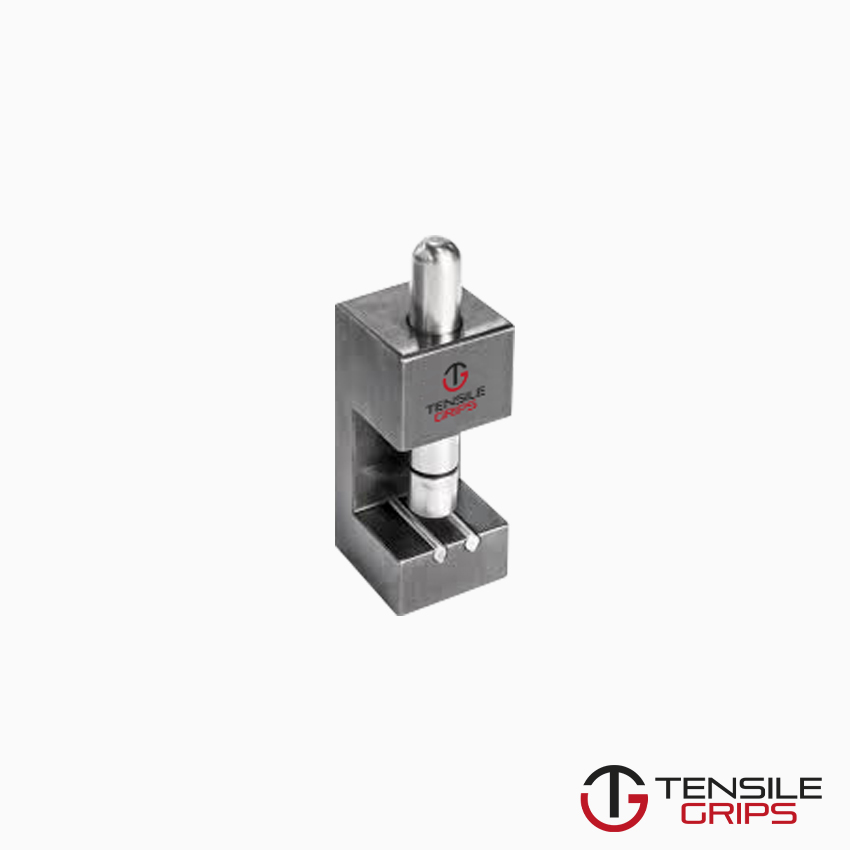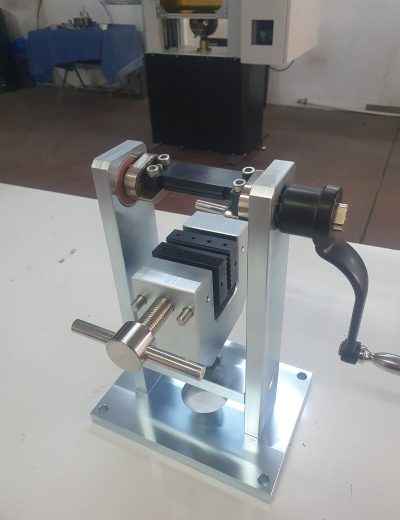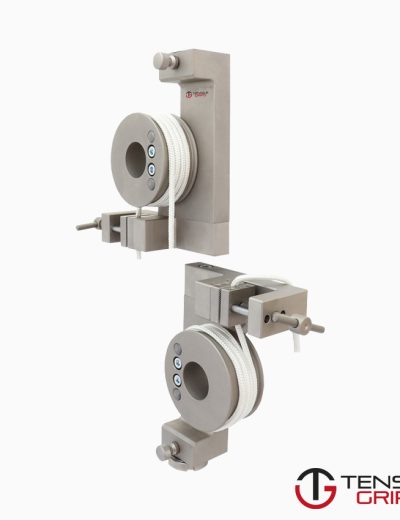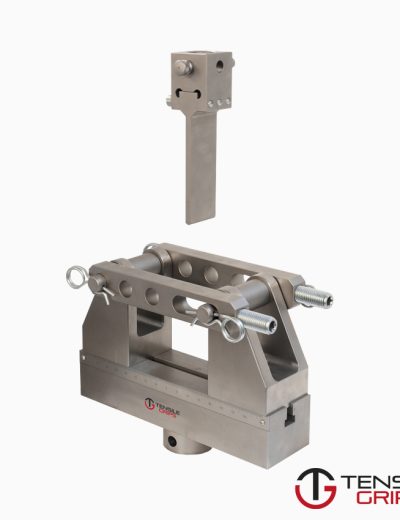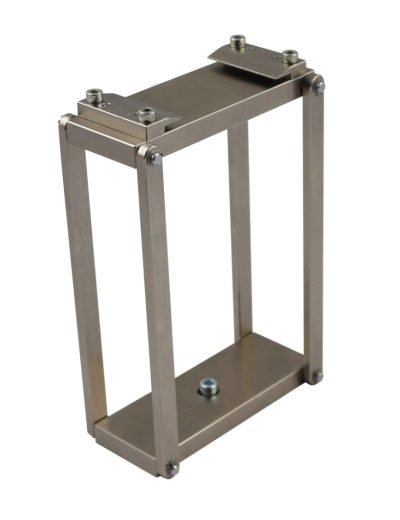ASTM B406 Test Fixture
ASTM B406 covers a test used to find the transverse rupture strength of cemented carbides.
Please Contact With Us For More Information
ASTM B406 – Standard Test Method for Transverse Rupture Strength of Cemented Carbides
ASTM B406 Cemented Carbides Transverse Rupture Fixture
ASTM B406 covers a test used to find the transverse rupture strength of cemented carbides. Cemented carbide is a combination of carbon and metal which
is sintered together.
Sintering uses a combination of pressure and heat to fuse metal together with other materials with much higher melting points.
Cemented Carbide is a very strong material and it is often used to craft saws, machine tool drills, and dies. While this material is strong,
it can also be brittle, which can affect performance.
This test procedure seeks to charaterize how brittle the material is.
Geometry
This fixture and test works very similar to a guided 3 point bend test.
There are two support cylinders on the bottom which are .25″ in diameter and space .5″ apart with a center to center spacing of .563″.
The loading nose is a .4″ diameter tungsten-carbide ball which comes down directly into the center of the specimen.
Solution
ParsRos has a specific design fro ASTM B406. The fixture can be outfitted with adapter couplings, or it can lie flat on a pair of compression platens and be pushed together.
The adapter setup is recommended because it is safer and more stable.
This test requires load control at an increase of 1.5kN/s. ParsRos Universal Testing Machines are capable of both closed loop load control and position control.
This test can be preprogrammed into a machine to allow for easy testing by a technician.
Analysis
The rupture strength is the most important measurement and is taken from the max load seen just before fracture or breakage.
Similar Specifications
ASTM C1161 – Flexural Tests on Ceramics

